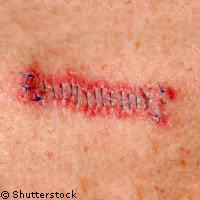EU-funded Melanoma project seeks to explain behaviour in the sun
An EU-funded Network of Excellence (NoE) has recently launched an online questionnaire to find out how 10,000 people in different countries around the world behave while in the sun. They survey also probes their attitudes to tanning and skin cancer. So far, 7,000 people have responded to the survey, according to the multidisciplinary 'Genetic and environmental determinants of melanoma: translation into behavioural change' (GenoMEL) NoE. Melanoma is a form of skin cancer that begins in melanocytes, the cells that produce our skin colouring. Usually starting in a mole, it is associated with excessive sun exposure. According to figures from the World Health Organisation (WHO), 132,000 malignant melanomas occur globally each year, and since the early 1970s the incidence of the disease has increased significantly. The multiple-choice survey examines how people assess their risk of getting melanoma, and what protection they use against the sun's rays. 'Nothing like this has ever been attempted before on such a large scale within health psychology research,' says Paul Affleck, GenoMEL project manager at the Leeds Institute of Molecular Medicine (LIMM), one of the project partners. The results, expected in early 2008, will help scientists to develop more effective prevention and education strategies, aimed at getting millions of sun worshippers to change their behaviour. 'The increasing number of melanoma cases we are seeing could be the result of more people going on cheap flights to sunny places, as well as the continuing fashion for a golden tan,' explains Mr Affleck. 'But we need to find out how these environmental and lifestyle factors are interacting with a person's inherent genetic risk of getting skin cancer or melanoma. So the more people who take part in the survey, the better.' The GenoMEL network is being funded to the tune of €10.45 million under the EU's Sixth Framework Programme (FP6) and involves 20 of the world's leading melanoma research centres. The main focus of the project is to collect DNA via blood samples from thousands of people, to identify the genes - running in families or particular populations - that may increase susceptibility to Melanoma. Scientists also want to find out how these interact with other genes and environmental factors such as exposure to the sun's Ultraviolet (UV) rays. 'So far GenoMEL has made much progress in understanding the role of four high-risk melanoma genes. But there are also many other relatively low-risk genes - such as the one that gives people pale skin, red hair and freckles - and others we don't know about yet,' explains Professor Julia Newton-Bishop, the coordinator of the project from Cancer Research UK. By the time the project ends in 2010, the project will offer people an online 'risk calculator' that will make it easy for individuals of different skin types to calculate their individual risk of Melanoma.
Countries
United Kingdom



